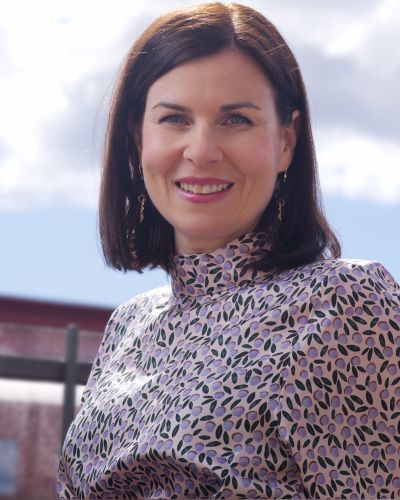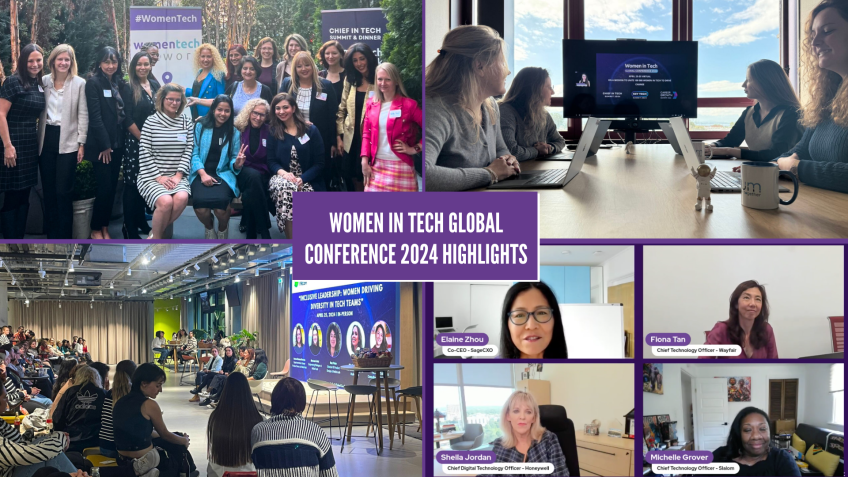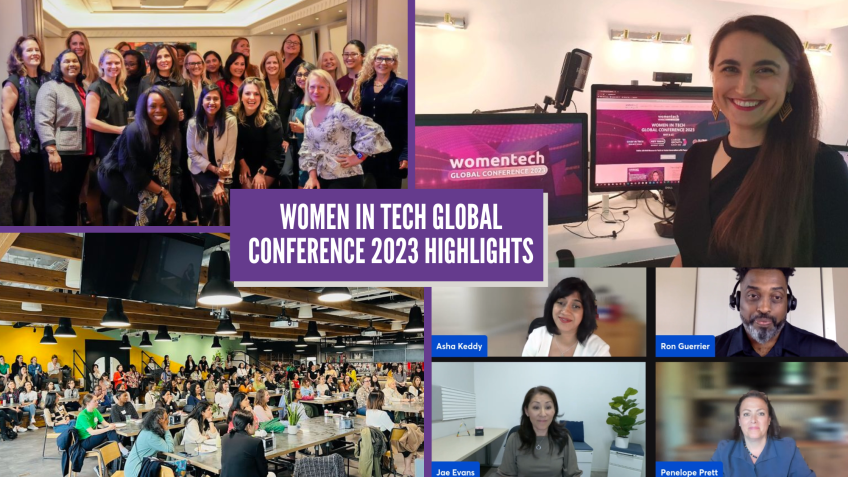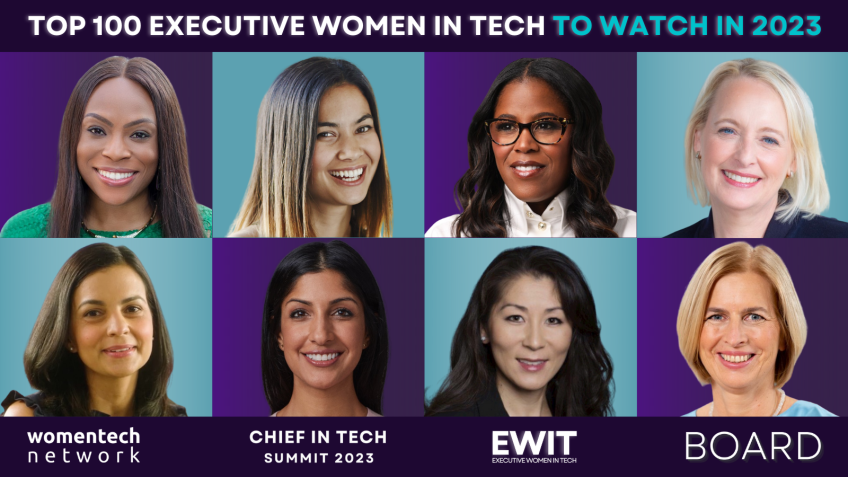From passion project to boardroom: Key learnings from creating an award-winning DEI approach in a tech consultancy Futurice"
Heidi Pech
Head of Diversity, Equity & InclusionTransforming a Passion Project into an Organization Strategy
Hi, I'm Hay Peck, the head of diversity, equity, and inclusion at Futurice, speaking to you from sunny Finland. In this blog post, I share our journey turning our diversity and inclusion (D&I) initiative from a passion project into an organizational strategy.
A Brief Overview of Futurice
Futurice is a tech consultancy company headquartered in Finland but with presence across several European countries such as Germany, UK and Sweden.
How Our Diversity and Inclusion Journey Started
Our D&I journey started by a group of employees who were not only passionate about, but also personally connected to, the topic. To sow the seeds of change, they decided to actively promote it within the company.
The Initial Workshop
The individuals brought on board professional D&I consultants to deliver a workshop. They aimed for representation from all segments of the company and ensured the participation of key leaders, including the CEO, Chief Marketing Officer, and Chief HR Officer. This two-day workshop in Stockholm focused on understanding personal biases and backgrounds and how they shape our experiences.
The Equity Workforce Initiative
Post-workshop, we decided to create a working group called the "Equity Workforce" to drive these issues forward, which anybody could join. Our initial efforts were spent defining what diversity and inclusion meant in the Futurice context and identifying potential biases.
Introducing the Wheel of Power or Privilege
We adopted and tailored Sylvia Duckworth’s Wheel of Power or Privilege, a tool helping our employees understand the differences in power dynamics in the organization. We emphasized the need for those with more power due to their identity to actively extend power to those with less.
D&I Audit and Inclusion Data
One major step we undertook was a D&I audit to understand the current state of diversity and inclusion in the company. By the inclusion data gathered, we could identify the gaps in the employee experience, especially for underrepresented groups.
Moving from Bottom-Up to Top-Down Approach
After 18 months of ground-level work with the Equity Workforce, we saw a need for a more strategic approach when D&I was prioritized in the new organization strategy. This transition led to the creation of our D&I point of view, ambition, and measurable goals, all of which were presented to the Futurice board of directors, who then held the company accountable.
Formulating the D&I Goals
We used results from the audit and the new organization strategy to formulate our D&I goals. A realization hit us; we couldn’t be inclusive for all underrepresented groups, so we had to make choices. The data helped us identify our focus groups.
Our D&I Goals and Ambition
Our prime ambition is to celebrate diversity and build an inclusive international culture with equitable opportunities for everyone. We formed three concrete, measurable goals to achieve this:
- A completely inclusive workplace, aiming to close any gaps in experiences between different groups. We specifically want to be in the top 25% of the benchmark data.
- Be the first choice for tech women and non-binary people. We aim to have one-third of our tech competence to be made up of women or non-binary people across all different career levels.
- Our leadership should mirror the organization. This means our leadership teams at country and global levels should reflect the gender diversity and international diversity of the part of the organization they lead.
Continuing Our Journey Since 2020
Along our continued journey, we've taken steps such as creating a Code of Conduct, developing an Inclusion Canvas for client projects, and sharing what we've learned. We've also realized that these actions actually serve all three of our goals, creating a more inclusive environment for all underrepresented groups, not only those we've chosen to focus on.
Learnings from Our Journey
- Start by building an inclusive culture before tackling diversity head-on.
- Face the issues that underrepresented people face in the organization.
- Reaching a specific number isn’t as important as what changes were made along the way.
- D&I targets should hold just as much weight as other business targets.
- D&I should be implemented in all aspects of the organization, not simply as a tick on the box.
- Understand that changing a culture takes time and requires daily work.
Feel free to continue this discussion or ask any queries on Linkedin. Thank you!
Video Transcription
My name is Hay Peck. And uh I work as a head of diversity, equity and inclusion at future. I uh I'm joining you today from Sunny Finland.And in my session, I will share how future I is the journey study from a passion project of a couple of individuals and made it uh all the level into the organization strategy and the uh board table. Uh Frice is a tech consultancy company headquartered in Finland, but uh with presence um across uh several European countries such as Germany, UK and Sweden and I will share my screen with you now. Yes. So futurized D story. It started with a couple of employees who were very passionate about this topic. They had a personal connection to it. They, it touched them personally and they were also very aware of what's going on in this field and they decided that we should do something about it. Uh As a company, we should start actively promoting and progressing this topic. In the company, they decided to organize a workshop. This is a picture from that workshop. Uh They got some professional D I consultants to deliver uh the workshop and uh they invited people uh making sure that there would be representation from all different parts of the company, from our different offices, uh different competencies and so on.
They also made sure that they got some key leaders to participate uh in the workshop. So there was the CEO, the uh chief marketing Officer and the chief hr officer uh of the time uh joined the session, we spent two days in Stockholm, uh really drilling deep into our uh own biases and our own backgrounds and really understanding like how those shape who we are and how those shape also our own personal journeys.
And I think it helped a lot of us to understand what it is really, that creates the company and makes the world um uh how it is and to uh really understand that actually, uh it's not quite an even, even playing field for everybody. But because of our background, some things have been easier for us than maybe they otherwise would, would have been um after the workshop, uh we decided that we want to found a working group to take these uh issues forward. So we founded something called uh equity Workforce.
Um Anybody was uh welcome to join equity workforce who wanted to be working uh on these topics. Um It was on top of everybody's daily roles. It wasn't part of anybody's uh job description as such, but we were doing it on, on top of our daily roles. One of the very first things we did was uh defining, what do we think these concepts mean at futurized. So we define diversity and inclusion for the futurized context. We wanted to um make sure that we represent uh all the different stakeholder groups um that we interact with.
Uh or if we can't have the representation of all those underrepresented groups within uh of diversities within those groups, then we at least wanted to make sure that we are aware uh of any biases that we might have due to that. And we wanted to uh build a company where everybody can feel welcome and feel that they can be their whole selves. They don't need to try to hide some part of themselves, but we kind of celebrate that we are all different and we see that that's something to be proud of. Uh on the right side, right hand side of this slide, you see something that might look familiar to you. It's uh this um Wheel of Power or Wheel of Privilege that originally Sylvia Duckworth developed. Uh we have uh uh taken uh Sylvia Duckworth's. We will, and we have um tailored it to our organizational context. So we have looked at the different aspects there and the different swears there and uh applied them to our context. What does our organization look like? We use this Wheel a lot in training our employees to help people to understand what our all the different kind of differences we have in the organization and especially understand that depending uh on your ID identity, you may hold more power than your coworker.
And if you are such a person that you hold a lot of power due to the um your identity, then you should work actively to extend that power to those who don't maybe hold as much. So with our equity workforce, uh we started working on different streams and we did many different activities kind of uh discussing with the group and deciding what we thought were the most uh important topics to work on. Uh Maybe uh one highlight I would like to share with you at this point was uh um our DE I audit. So we decided that we really need to find out more about the current state of diversity and inclusion in the company. How, how do our people experience this topic? Uh First of all, by law, we cannot gather too much uh data uh regularly uh regarding the different diversities of our employees. But uh with this kind of de I audit, which is completely anonymized, we were able to uh gather a lot of diversity data uh where people were asked to self identify from a numerous different uh perspectives. Uh So the diversity data was interesting, but actually the beef of this uh audit was the inclusion data.
So with the inclusion data, we were able to see what are the differences of different group groups in terms of the employee experience and uh especially where do the underrepresented groups and which underrepresented groups, where is their employee experience? Not up to the par with the uh majority groups. So we kind of saw where the gaps are and where, where are the pain points? This uh audit. Uh It was quite tough to, to face those results, especially for our leaders. Um It was uh quite a, quite a tough situation um because the whole company was founded to create a great workplace for every employee um with our different um activities. Uh What we also continued doing was having these behind the scenes discussions with those key leaders who had attended the original workshop. Those discussions helped to really build uh on the commitment and buy in um towards the E I of those leaders. So it was helping them to all the time, gather their understanding and build on like really understanding what this topic is about and how, how wide the whole topic is. And also at the same time, they became more and more committed and convinced that maybe this is something that we should do something more about. Uh as a company. This ha this continued in this way for maybe uh about 18 months until about spring uh 2020.
Uh And that was the time when company was going through a strategy re renewal process. Uh That process was done in a co creative way. Uh employees were invited to take part in it. There were a number of different workshops where uh people were invited to share their views as part of those workshops. There had been some uh future work work life trends that had been gathered. There was dozens of different trends and employees were asked to um uh prioritize which trends do they see as the most important ones, the most significant ones that we should be using as the cornerstone to build the new organizational strategy on uh in those workshops. DE I was the first trend that employees chose to uh prioritize uh for the new strategy. Why this happened uh Throughout that 18 months that we had worked with the equity workforce. Uh Originally, this de I topic had been of interest of a fairly small group, most of those who somehow were touched by it personally, but as we started to do different activities, um more and more people joined those activities, their understanding grew and also any, for example, discussions in slack more and more people started to take part in those.
It wasn't anymore, only people who themselves were part of underrepresented groups, but anyone started to be part of those uh those discussions. So it started to become more and more um important as a whole uh for, for the company from the employee's perspective. So then we decided that OK, well, it looks like really, we, we rebuild this new organizational strategy and use the de I as one of the cornerstones for that. Um At that point, we saw that we need to maybe do something a more structured and um um more strategic rather than keep on working with the uh just with the uh grassroot level bottom up, uh type of approach with the de I um workforce, the equity workforce. So we created a futurized de I point of view. We created uh ambition and we created measurable goals. Uh We took all those three items and we went to the futurized board of directors um who represent the ownership of future. I and uh introduced them to the board. Uh The board took them very well and um agreed with our proposal and promised that they will hold us as a company accountable that we really will make progress towards those goals that we had just presented. And this was the moment when de I became not only a bottom up approach, but now it meant that it was also top down. It was on every leader's agenda, whether whether or not they want, but the board was gonna hold them accountable for making progress towards that.
How did we create those goals? So, the audit that I told you about that gave us the current state analysis that told us what is broken, what do we need to fix? What do do we need to get away from these are called push factors. Then, on the other hand, the new organization strategy that told us what is the direction we should aim for also with the DE I work. So that was kind of telling us what is the pool factor and by framing from these two factors, we were able to formulate the DE I goals. One of the tough things uh personally, for me, at this point was that when we were working with the equity workforce, we had been able to uh kind of have the approach that we want to. We want to be inclusive for absolutely all the possible underrepresented groups, we want to create actions for all of them. When, when um having to uh set the goals and actually tracking them, we realize that we can't keep on doing it like this. We actually do have to make choices. But luckily the data from the audit. And on the other hand, the strategy gave us some um guidelines, what should be the uh groups that we are uh focusing on and here's the ambition and those three goals.
So we wanna celebrate diversity and commit to building an inclusive international culture with equitable opportunities and sense of belonging to everyone. And we have three very concrete measurable goals. How we aim to get there. Firstly, we wanna be a completely inclusive workplace.
We have a people pulse tool with which we can measure this and there we are looking at the differences between different groups in this case, between different genders, their experience of conclusion and non-discrimination. And we are aiming to close any gaps that there may there might be in the beginning of this journey, there was quite a large gap in terms of different genders. In this aspect, we also want to be in the top 25% of the benchmark, the same tool as gives us um benchmark data. Secondly, we want to be the first choice for tech uh women and non binary people. What this means is that we looked at the different parts of the organization which we call competencies and ana analyze the gender balance in those in more, in uh other of our um competencies, we were very balanced on uh in terms of the gender. But in our tech competence, most people are developers or uh software architects and so on. So in that competence, it was very imbalanced. Of course, the sector is also imbalanced. We wanted to focus on specifically on this competence in our goals. So we want to have one third of the people in that competence that they are women or non binary and in such a way that it's across all the different carrier levels.
Uh because we don't want to end up in a situation where all our junior people would be um women or non binary and all the seniors would be men. And finally, we want that our leadership mirrors uh the organization and this means that the leadership teams on country level and on global level should reflect the uh gender diversity and the international diversity of that part of the organization that they lead. In other words, this means that the Finnish leadership team should have the same composition of different genders than the Finland organization and the same composition of international talent as the Finland organization. And these three goals when uh working towards them uh doing different actions towards them, what I have become to realize is that they actually work very, very tightly together. So when you're kind of doing actions towards one of the goals, actually as a side effect, you're also helping uh two others. And you notice here that I I mentioned gender quite many times. I mentioned international, these were the uh aspects that um we identified from the audit and from the strategy. But it doesn't mean that we will be focusing on these aspects all the time. We will be reviewing them uh regularly.
Also when uh especially with, with the uh working towards the inclusive workplace, even though we measure it in terms of the uh gender and nationality experience, we have very much noticed that actually it's becoming inclusive for all possible underrepresented groups. And for example, also in our recruitment, we can notice that we are attracting nowadays um different, different kind of underrepresented groups, not not only in terms of gender and nationality. So this is how, how we have been continuing since uh 2020 I also took that time, the position as the full time um head of uh de I because we saw that it's needed that somebody really leads this work and make sure that we will actually make progress towards these goals. Um We have worked on different streams. Um But maybe some things to, to mention here is that we wanted to take this close to our own core business, which is the uh client work, the client projects. And also we wanted to uh share openly what we have learned throughout our journey. So that maybe that encourages some other uh peer companies to also embark on this journey. And if we share also things that have not worked well, maybe the journey would be a bit easier for them so that not everybody has to go through the same, same struggles. Uh Just sharing a few concrete examples, what we have done this is our code of conduct.
Uh It's a very concrete tool for us. Uh We go through this in the on boarding. So all the futur situations uh become familiar with it and we actually use it as a tool um to, for example, in solving conflicts uh on uh uh one on one cases. So we encourage people to really, really use this if they get into a conflict with the uh colleagues. So to as the first step to kind of uh refer to the code of conduct and check whether, whether uh the conflict is according to the code of conduct. We have also used this in client projects. Uh When there has been some tough, tough situations uh together with the client representatives, um we created something called inclusion canvas. Um And we created this so that our own consultants that can use this in their client projects.
So when we work in client projects, it's B to B business. Uh usually uh helping the client in some kind of digitalization issue, this canvas was created so that um whatever the product or service that the team is creating, they can use this canvas easily to kind of check whether um whether they could make it more inclusive for underrepresented groups with small tweaking.
Uh so that it's uh kind of still business savvy. So it's not meant to create AD E I strategy, but it's for any product or service development teams to create more inclusive products and services. Um This is something that's open source we want, we knew from the beginning that we wanna make this open source so that as many um companies or consultants would use this as possible because that way we will create more uh inclusive uh society. And finally, um still to wrap up some of my uh learnings. So in my view, it's good to start from uh building the inclusive culture before approaching uh head on the diversity. Uh I think everybody can work on checking whether their own behavior is inclusive. And especially if you're in a leadership position, then you can also demand those that kind of behavior from people around you. And as a leader, you can especially create psychological safety and show your vulnerability. You should be ready to face the problems and the issues that underrepresented people uh uh face in your organization, they are there, but you need to be ready to, to be able to see them. Then I said about data and numbers. However, I wanna remind that it's not about fulfilling quotas uh but it's about making the change. So in the end of the day, it's not so important. What's the specific number we hit more important is what did we change when we tried to get there?
Uh D I targets should have the same weight and gravitas as any other business targets. This means if you incentivize some, some business targets, please incentivize also D I targets D I is not an hr issue or some kind of a project that is a tick the box completed, but it should be implemented and embedded in all aspects of their organization. So structures, ways of working practices, business, culture, everything. And finally, it's about culture change. And when you understand about culture change and change management, you know that that's, that's not a fast thing. It takes time and it requires work every day, but eventually you will get better.
I'm not saying you will definitely get there, but I think you will get better. Thank you very much and um we are running out of time, but I would be very happy to continue discussion and uh answer any questions you may have in uh for example, in linkedin. Thank you.






